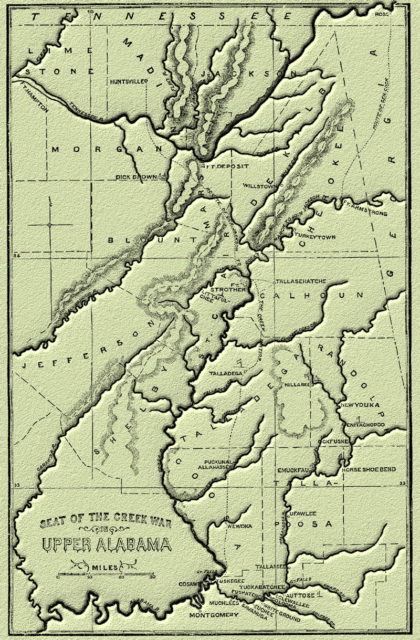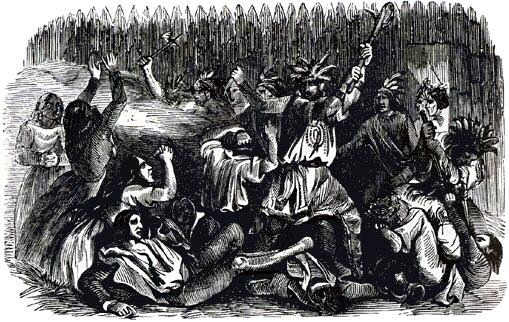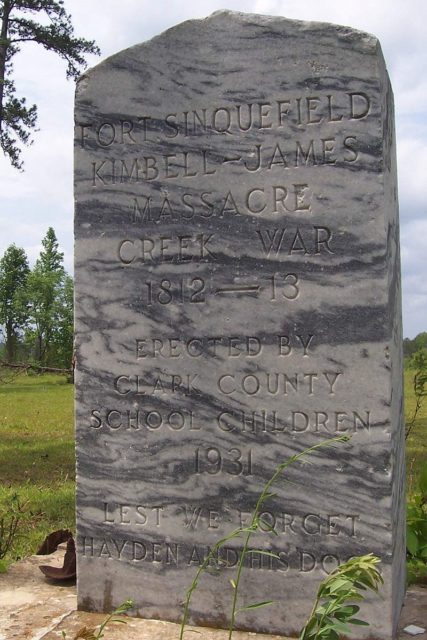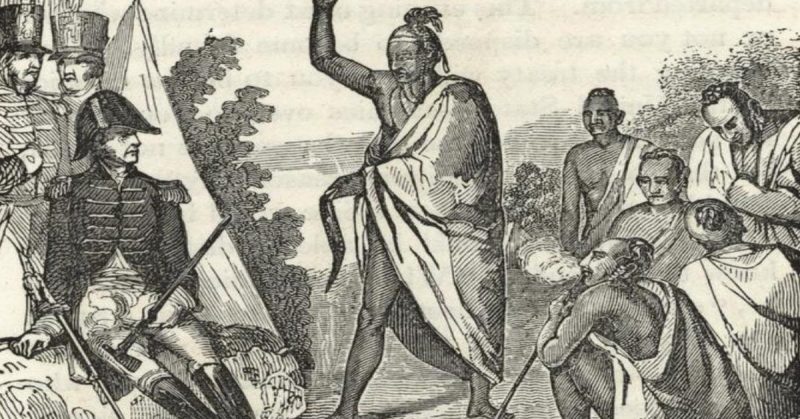War often tears families apart, leaving them mourning those lost to violence or the deprivation that follows. But sometimes their stories have a happy ending.
This was the case for Mr. and Mrs. Merrill, a pair of frontier settlers caught up in the Creek Indian War.
The Creek War
In 1813, war flared up in the area of what is now Alabama. The Creek Indians, encroached upon by whites and encouraged by foreign agents, rose in revolt against the United States. Communities that had peacefully coexisted for years found themselves at each other’s throats, with people of mixed race forced to choose between their different families.
It was a brutal conflict, one motivated in part by religion. A number of prophets stirred up the rebels and led many of their raiding bands. Believing that they were fighting for the very survival of their people, these bands set out first to raid and harass settler communities, and then to wipe them off the map.
The whole region was plunged into war.
The Attack on the Kimball House
The first great success for the Creek warriors came at Fort Mims on the 30th of August 1813, when Red Eagle captured the fort. He was unable to control his men, who went on a rampage, slaughtering those inside. It was an incident that set the tone for many other actions during the war.
Two days later, the settlers Abner James and Ransom Kimball were gathered at Kimball’s house along with their families, a total of 17 people. Living two miles from Fort Sinquefield, they planned to move to the safety of the fort within the next few days.
It was not to be. The prophet Francis attacked the Kimball house, along with a band of Creek troops. The settlers and their families, unable to defend themselves against warriors on the warpath, were overrun. Of the 17, only five survived, including 16-year-old Isham Kimball.
One of the survivors was Abner James’s daughter, a young married woman going by the name of Mrs. Merrill.

Mrs. Merrill’s Brush with Death
Mrs. Merrill’s husband had volunteered to join the forces fighting against the Creek Indians, leaving behind his wife and infant child.
When Francis’s men attacked the Kimball house, the terrified Mrs. Merrill was knocked out, scalped, and left for dead. The attackers also tried to scalp her baby but were unable to complete the horrible deed.
Mrs. Merrill had been luckier than most of her companions, and the blow that knocked her out did not kill her. Hours later, she awoke among the dead. Even more miraculously, her baby had survived. She found the child among the bodies and breastfed the infant, who began to recover from the ordeal.

Battered and near death, Mrs. Merrill set out for Fort Sinquefield, the baby in her arms. But even that two-mile walk was almost too much for her. Her strength gave out. Finding as safe a place as she could to leave the infant, she crawled on until she reached the walls of the fort.
The troops at Sinquefield took her in, tended her wounds and sent men out to recover the child. Despite the horrors and the injuries they had been through, both mother and baby survived.
Mrs. Merrill’s relief at having survived was short lived. The war was still raging, and before she could contact her husband to tell him of her survival, word came that he had died in battle.

Mr. Merrill’s Brush with Death
While these events were taking place, Mr. Merrill was serving under General Claiborne, one of the commanders of the American effort against the Creek warriors. The news came to Merrill’s post of the attack on the Kimball house and the death of his family. News of his wife and child’s amazing survival had not reached him when he took part in one of the many battles that came in short succession that fall. Badly wounded, he was left for dead on the battlefield, as his wife had been before him. Soon after, word reached her that her husband was dead.
But Mr. Merrill had survived. Regaining consciousness after his unit had left the field, he was taken in by a group of volunteer soldiers from Tennessee. They were sending their wounded back to Tennessee and sent the badly hurt Mr. Merrill with them.
It took long months for Mr. Merrill to recover from his wounds. As far as he knew, everything he had lived for in Alabama was gone, killed in the war. And so he settled in the state that had shown him such care.
Living On
Both believing themselves to be widowed, the Merrills built new lives in the aftermath of the war. Both married again and had children. Their families grew up around them.
Years later, Mr. Merrill and his family decided to emigrate from Tennessee to Texas. Along the way, they sought hospitality with a family living along their route. As was common on the frontier, they were given a place to stay for the night.
But as the Merrills were introduced to their hosts, Mr. Merrill faced an amazing shock. The wife of the man who had taken them in was his own first wife, the one he had thought long dead.
Moving On
It’s almost impossible to imagine the mix of emotions that must have gone through the couple’s minds as they saw each other. Shock, joy, confusion – a tumult of feelings, among them uncertainty about what this meant for their futures.
In the end, they decided to continue as they were. Both had built new lives and new families. Both were happy with these. And so they parted once more, not in mourning but in the joyful knowledge that they had both survived.
